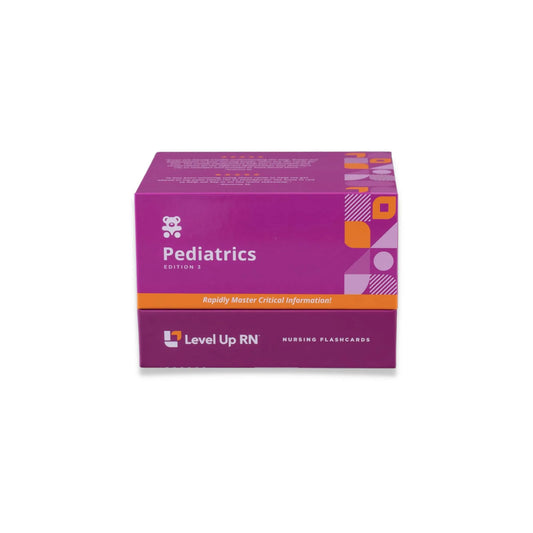Hi, I'm Cathy with Level Up RN. In this video, I'll be discussing intussusception. And at the end of the video, I'm going to give you guys a little quiz to test your knowledge of some of the key points I'll be covering, so definitely stay tuned for that. And if you have our Level Up RN pediatric nursing flashcards, definitely pay close attention to the bold red text on the back of the card because those are key facts that you are likely to get tested on in nursing school.
Intussusception is a condition that causes part of the intestine to fold into the section next to it. And this telescoping results in obstruction, which impairs blood flow to the area and leads to ischemia. So intussusception is most common in babies under the age of 18 months and is more common in males versus females. Signs and symptoms include abrupt severe abdominal pain, which may cause the child to draw their knees up into their chest. Other signs and symptoms include vomiting, lethargy, weight loss, as well as a sausage-shaped mass that can be palpated in the right upper quadrant of the abdomen. In addition, the child may have currant jelly stool, which is stool that contains blood and mucus. And then with bowel necrosis, we can end up with perforation and sepsis, which in turn will cause a fever in the child. In terms of diagnosis, an ultrasound will show a bullseye or target sign, which is indicative of intussusception. And then an air enema provides both a diagnosis and treatment of intussusception. In most cases, intussusception can be treated with an air or barium enema, which helps to push the bowel back into its normal position. However, in a small percentage of cases, surgery may be necessary. In terms of nursing care, you will need to place an NG tube for decompression when intussusception causes a bowel obstruction. Other interventions include the administration of IV fluids and monitoring the child's stool for the presence of blood.
All right. It's quiz time, and I've got three questions for you.
Question number one. Why does intussusception cause currant jelly stool?
The answer is due to the presence of blood and mucus in the stool.
Question number two. Intussusception may cause a palpable sausage-shaped mass in the right upper quadrant of the child's abdomen. True or false?
The answer is true.
Question number three. What procedure provides both a diagnosis and treatment of intussusception?
The answer is an air enema.
All right. That is it for this video. I hope you found it to be helpful. Take care and good luck with studying.


